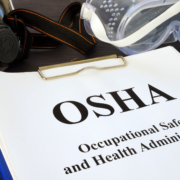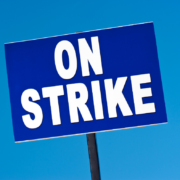By Rebecca Ballard
Last year the first ever federal fashion bill, The FABRIC Act, was introduced in Congress, and it will be reintroduced this September. However, the intersection between labor rights, legislation, and the garment industry is far from new. The industry has been tied to labor abuses since before our country’s founding; it was cotton that enabled the United States to reach global economic prominence, and issues with forced labor in fashion continue to this day. And it is not just labor concerns linked to fashion, but key labor achievements as well. Many of the labor laws that govern our lives and workplaces took root in the garment industry.
As a guest blogger for NCL and a longtime partner with the organization, I am excited to briefly share the fascinating history linking the garment industry and labor movements, some of the present-day issues in the industry, and even an opportunity to advocate for change this year.
The Industrial Revolution and the U.S. Fashion Industry
The industrial revolution gave rise to the fashion industry as we know it today, bringing innovation and affordable mass-produced items as well as widespread workplace labor abuses, sweatshop conditions, and pollution. In fact, the beginning of the U.S. industrial revolution is often cited as the opening of a textile mill in Pawtucket, Rhode Island, in 1793. During the Industrial Revolution we saw women, including recent immigrants, and children take jobs in textile mills to supplement family income. Many of these workers were exploited, toiling sometimes for 16 hours a day during high demand periods, for a subsistence income; all too often they were subject to wage theft.
But through this work, many women garment workers also achieved a measure of independence, leaving homes and families, and some used that newfound independence to join social activist movements and advocate for improved labor conditions. Female workers in Lowell, Massachusetts, for example, formed America’s first women’s union in the 1830s, which focused on maximum hours laws, including a 10 hour work day and higher wages, and they conducted one of the first major labor strikes in this nation’s history. Workers in New York’s sweatshops were victims of harassment, wage theft, and terrible conditions, and the International Ladies Garment Workers Union and Amalgamated Clothing Workers of America unions formed to demand labor reforms there in the early 1900s.
The Triangle Shirtwaist Factory Fire and Subsequent Labor Reforms
Just as unions were gaining strength, the United States saw a devastating example of the incredible harms that can take place in the garment industry. Near closing time on March 25, 1911, the factory fire that broke out at the Triangle Shirtwaist Factory killed 146 workers, many of whom were immigrant women and girls. The building’s only fire escape building had collapsed during the rescue effort. Machinery and tables crushed workers, while locked doors trapped them, and there were only a few buckets of water to douse the flames. Firefighter ladders were too short to reach the 9th floor and safety nets ripped. The survivors from the 500-plus Triangle Shirtwaist Factory recounted the horrors they witnessed, including their fellow workers leaping to their deaths from the 9th floor rather than being burned alive. Some victims were as young as 14 years old.
In New York state, this tragedy prompted the transformation of the state’s labor and fire codes, thirty-six new state laws, and increased labor funding. The New Deal era under President Franklin Roosevelt saw adoption of similar legislation at the federal level nearly 20 years later with the support of some of these same reformers, like Frances Perkins who witnessed the Triangle Shirtwaist Factory fire herself and later became the Secretary of Labor under President Roosevelt. The *Occupational Safety and Health Administration, country-wise fire and safety laws, and the Fair Labor Standards Act could be said to have arisen from laws enacted in New York after the Triangle Shirtwaist Factory fire.
Following the lead of women’s suffrage groups, and often in concert with women’s rights leaders, a number of trade unions formed to support the rights of garment workers. Roosevelt’s New Deal offered legal protection to unions, and through union gains and New Deal programs sweatshop conditions lessened and wages increased. However this brief period of reforms for workers in the US garment industry did not continue when the industry expanded and much of the industry moved abroad.
In addition to labor issues, the modern garment industry continues the environmental degradation that started during the industrial revolution. The industry today is playing a role in climate change and not on track to meet key climate goals and operate within planetary boundaries in its current form. Overproduction as well as over-purchasing are both extreme, and there are presently enough clothes on our planet to clothe six generations of people. Waste is often exported to other countries, hurting local economies and climates through waste colonialism. The industry continues to be powered by coal and uses toxic chemicals that are dangerous for workers, wearers, and our planet. Water usage is also highly problematic. For example, it takes over 2,000 liters of water to make just one t-shirt, around as much as one person drinks in three years. The water used in clothing creation, as well as clothing use, is often filled with microfibers that reach even the depths of our oceans and cause great harm to planetary ecosystems.
California Legislation
Sweatshops reemerged in the 1960s due to a range of forces in the U.S. and abroad: the changing retail industry, the growing global economy, increased contracting, and a large number of immigrant workers in the U.S. In the 1970s, manufacturers began outsourcing production to other countries to lower labor costs and employ a more compliant, non-union worker base. Despite increased consumption and a growing population, the number of U.S.-based garment workers dropped 37 percent, from 1.2 million in 1970 to 760,000 in 1995.
When sweatshops reemerged on U.S. soil they brought with them many horrific practices. In California in the 1990s, the El Monte sweatshop, was subject to a raid that uncovered workers held behind fences surrounded by razor wire. These modern-day sweatshops exposed brutal conditions, with many tricked into accepting U.S. employment while living in other countries and once here being subject to debt bondage, threats of harm to them or their families, and violations of wage and hour codes.
The 2021 California’s Garment Worker Protection Act (SB 62) enacted many statewide reforms for the industry in the state with the greatest number of garment workers. This landmark law aims to end wage theft and the payment of less than a minimum wage to garment workers by ending the piece rate of payment and creating liability for contractors for the full amount of unpaid wages and reimbursement of expenses, no matter how many layers of contracting are used. It also aims to enhance workplace safety by having garment workers no longer need to work at unsafe speeds to complete as many items as possible each day to reach a fair rate of pay.
The FABRIC Act
On the federal level, promising reforms include the first federal fashion industry bill, The Fashioning Accountability and Building Real Institution Change (FABRIC) Act, which was introduced in 2022 and will be reintroduced this September. A federal Lobby Day on September 12th is planned in partnership with national worker rights and sustainable fashion NGOs. The FABRIC Act follows in the footsteps of California’s SB62 by eliminating the piece rate and creating joint and several liability for violations of the law. The FABRIC Act also creates a national garment manufacturing registry and incentivizes domestic production through a $40 million garment manufacturing grant program and reshoring tax credits. Anyone is welcome to be a part of the Lobby Day, and can sign up to volunteer here.



















